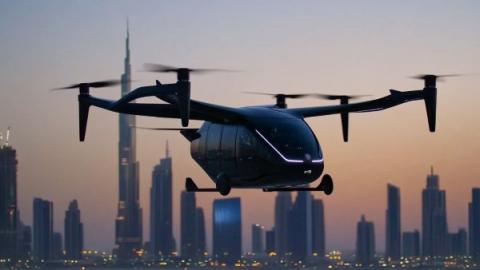With India’s air transportation landscape evolving, three homegrown startups are racing to redefine how people travel—Sarla Aviation, ePlane, and LAT Aerospace. Each targets different niches:
Sarla Aviation: urban air taxi (eVTOL) with vertical take-off and landing.
ePlane: electric air taxi/ambulance, pioneering lift-plus-cruise eVTOL.
LAT Aerospace: short-haul, regional STOL flights using small fixed-wing planes.
This article contrasts their missions, technologies, business models, funding, challenges, and impact, showing how each may shift India’s air mobility paradigm.
Table of Contents
Company Overviews & Vision
1 Sarla Aviation
Based in Bengaluru; founded by Adrian Schmidt, Rakesh Gaonkar, and Shivam Chauhan.
Named after Sarla Thukral, India’s pioneering female pilot.
Developing ‘Shunya’, a 6-seater eVTOL urban air taxi designed to provide affordable flying taxis by 2028.
Focus on airport transfers, urban commuting, and air ambulance services.
2 ePlane
Chennai-based, founded in 2017 by Prof. Satya Chakravarthy and Pranjal Mehta, incubated by IIT Madras.
Developing e200X, a two-seat lift-plus-cruise eVTOL with rooftop compatibility.
Targeted for urban air taxi and ambulance services by mid-2025–2026
Entered key partnerships for commercialisation with Empire Aviation, TCS, and Sona Comstar.
3 LAT Aerospace
Co-founded by Deepinder Goyal and Surobhi Das, aiming to redefine regional aviation.
Focuses on 12–24 seat STOL aircraft taking off from “air-stops” in Tier‑2 and Tier‑3 cities.
Raised $50M, with a $20M personal investment from Goyal.
Prototype expected by late 2025, with flights in 2026 .
Technology & Aircraft Design
1 eVTOL vs STOL
Sarla Aviation: classic eVTOL with multiple vertical rotors and electric motors; Shunya can carry 6 passengers + pilot.
ePlane: lift-plus-cruise configuration—vertical rotors enabled decoupled wing lift for efficiency; two-seater design, with plans for air ambulance roles.
LAT Aerospace: classic fixed-wing STOL, no vertical lift; prioritizes simplicity and low operating costs.
2 Infrastructure Requirements
Sarla and ePlane rely on vertiports or rooftop pads for eVTOL flights.
LAT Aerospace leverages air-stops, which require minimal runway infrastructure—akin to parking lots.
Market Focus & Use Cases
1 Urban vs Regional
Sarla: intracity to regional urban commutes; major metro-to-metro routes and last-mile connectivity.
ePlane: urban routes, short commutes, and air ambulance services; planned rollout in India, UAE, Thailand, Indonesia.
LAT Aerospace: focuses on medium-haul, regional connectivity for Tier‑2/3 cities overlooked by conventional airlines.
Funding & Strategic Partnerships
1 Sarla Aviation
Received $10M Series A1 led by Accel plus angel investments (Binny Bansal, Nikhil Kamath, etc.)
Also raised pre-seed funding from Campus Fund and Theia Ventures in 2024
2 ePlane
Raised $14M Series B led by Speciale Invest and Antares Ventures; total funding includes $1M seed.
Partnerships: Empire Aviation, TCS for operations and technical support; Sona Comstar for powertrain development.
3 LAT Aerospace
Raised $50M total, including $20M from Deepinder Goyal.
Currently hiring talent in aerospace and systems design.
Projected Timeline & Roll-out
| Startup | Pilot Launch | Commercial Rollout |
|---|---|---|
| Sarla | Prototype unveiled Jan 2025 | Commercial from 2028, start in metros |
| ePlane | Prototype flight in mid‑2025 | Commercial by late 2026 |
| LAT | Prototype expected late 2025 | Routes begin in 2026 across regional cities |
Strengths & Competitive Advantages
Sarla Aviation
Deep-pocketed funding with local investor support.
Full-stack eVTOL designed for India.
Possible first-mover urban vertiport network.
ePlane
Unique lift-plus-cruise eVTOL design for efficiency and range.
Strong partnerships (Empire Aviation, TCS, Sona Comstar).
High relevance in medical evacuations (air ambulances).
LAT Aerospace
Practical STOL model using existing airstrips.
Cost-effective setup and simpler certification.
Large target market in underserved regions.
Challenges & Risks
Regulatory & Certification
eVTOLs (both Sarla & ePlane) require vertiport infrastructure & safety vetting.
LAT must certify STOL prototypes and negotiate use of air-stops with local authorities.
Technical Complexity
eVTOL: complex multirotor systems, battery management, safety redundancies.
LAT: aerodynamic design balancing light structure with performance.
Market Acceptance
Urban commuters must embrace costly air taxi services.
Rural/regional travelers may need behavior change from road to air travel.
Funding Sustainability
Continuous cash required for R&D, manufacturing; each model demands successive funding.
Broader Impact & Opportunities
Urban Mobility & Pollution
Sarla’s air taxis promise to ease traffic congestion and reduce carbon emissions in metros.
Regional Connectivity
LAT’s air-stops could revolutionize accessibility, sparking economic and social development.
Emergency Services
ePlane’s air ambulance capabilities align with healthcare needs, especially in remote areas.
Industrial Ecosystem Growth
Together, these startups stimulate aerospace manufacturing, talent development, and urban planning—laying groundwork for India’s future in the global AAM (Advanced Air Mobility) sector.
Summary Comparison
| Feature | Sarla Aviation | ePlane | LAT Aerospace |
|---|---|---|---|
| Aircraft Type | 6‑seat eVTOL | 2‑seat lift‑plus‑cruise eVTOL | 12‑24 seat STOL fixed‑wing |
| Infrastructure | Vertiports/rooftops | Rooftops & vertiports | Air‑stops, compact runways |
| Primary Use Case | Urban air taxi | Air taxi + ambulance | Regional commuter flights |
| Funding Raised | $10M + angel/seed | $14M Series B + seed | $50M, inc. $20M personal |
| Pilot Tests | 2025 prototype | mid‑2025 test flights | late 2025 prototype build |
| Commercial Launch | target 2028 | target mid‑2026 | expected 2026 routes |
Future Outlook
Sarla: Landmark in urban mobility if it achieves 2028 rollout; needs infrastructure coordination.
ePlane: Strong positioning through partnerships; must scale prototype to production.
LAT Aerospace: Unique “buses in the sky” model; success hinges on air-stop approvals and public adoption.
Final Thoughts
Each startup—Sarla Aviation, ePlane, and LAT Aerospace—addresses a distinct segment of India’s air mobility landscape. Sarla focuses on dense urban travel, ePlane blends efficiency with emergency services, and LAT bridges regional air connectivity gaps. Their combined growth could make India a pioneer in advanced air mobility, impacting cities, towns, and regions across the country.











